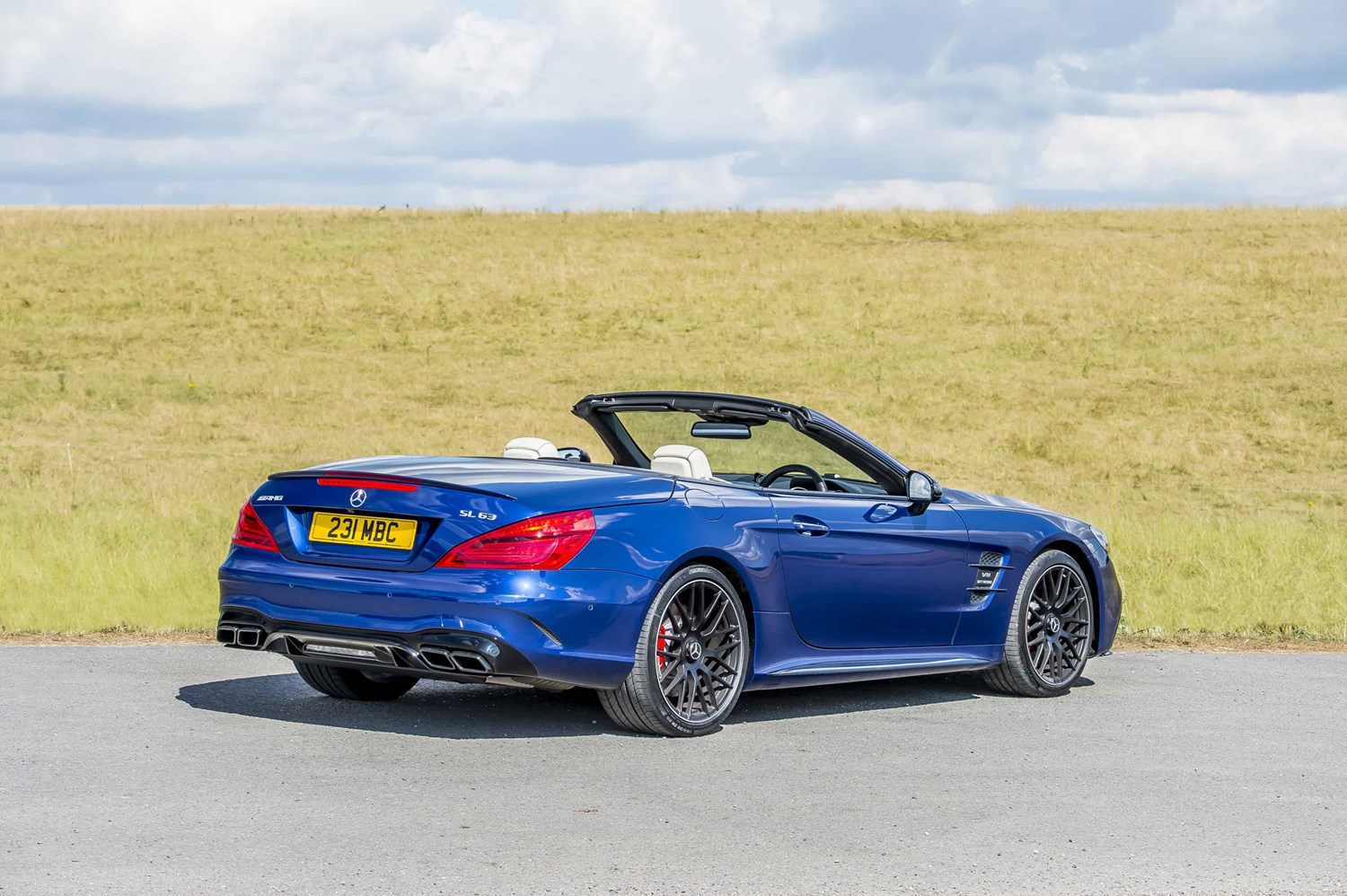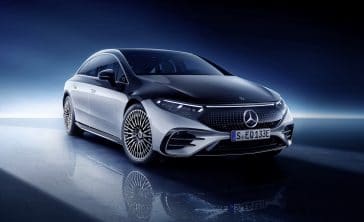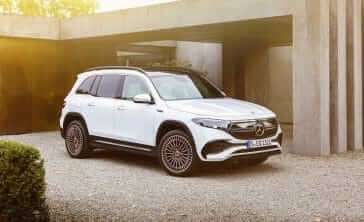Model Review
The Mercedes SL is a grand tourer, two-seater sports car which dates back to the 1950s. The first version – the 300 SL – was made famous for its stunning looks and of course those Gullwing doors which opened upwards rather than outwards.
The original concept was simple – to create a sports car that was as great to look at as it was to drive, and that philosophy has continued through the years to this latest sixth generation model.
While its DNA has remained the same, the SL – or Sports Lightweight where the name derives – the car has got bigger, features state of the art technology and has become more powerful.
Latest Model
The latest generation model is starting to show its age a little now. First launched in 2012, it was the first SL to be built almost entirely of aluminium, making it much lighter than the previous version.
It received a mid-life facelift in 2016, with revisions to the engine line-up as well as a number of cosmetic changes. These include new headlamps, and a new grille, side vents and bumpers front and rear to fall in line with other models in the Mercedes line-up.
Despite being badged ‘sports lightweight’, the latest generation model still weighs in at close to two tonnes, but just because it’s not as small or light as you may expect a ‘sports car’ to be, don’t think it isn’t backed up when it comes to performance. In fact it’s a serious consideration if you’re in the market for a luxury sports car, and offers serious competition to the likes of the BMW 6 Series Convertible and Jaguar F-Type roadster.
There are four options to choose from, including an ‘entry-level’ 3.0-litre V6 right through to a heart-stoppingly quick V12 AMG 65.
Value for money
The SL isn’t cheap with prices starting at £79,965. The one comfort though is that you shouldn’t need to tick many option boxes, as it comes equipped with pretty much everything you’ll need for both performance and comfort.
The ‘entry-level’ model comes armed with satellite-navigation, DAB radio, parking sensors, dual-zone climate control and a heater that blows warm air to your neck, should you decide to pop the roof down on a cold, crisp morning.
It pretty much matches most of the competition pound-for-pound, the only thing we’d say is that the infotainment system is a bit dated now, and is starting to show its age alongside more modern offerings from its rivals.
But it is a superb buy, thanks to heavy-hitting depreciation. The cheapest of the latest generation models are available for as little as £17,000, which buys an SL350 with around 80,000 miles on the clock. Spend nearer to £20,000 if you want a lower mileage version. Facelifted versions also offer great value for money, with these starting from just £30,000. But the best savings are to be had on nearly-new models, with a one-year-old example for under £50,000 – a frankly giant £30,000 saving off the list price.
Looks and image
The SL was last facelifted in 2016, and while very little was changed underneath, there were quite a few cosmetic changes to bring the SL in line with other models in the Mercedes line-up.
The biggest visual updates included a revised front end, which saw a new front grille and side vents behind the wheels, plus adaptive LED front headlights with daytime running lights.
Overall, the SL does an amazing job of managing to look sleek and elegant, as well as being a true sports car. Obviously, as you’d expect for any model with an AMG badge on the back, the high-end performance versions get more sporty features like larger alloy wheels, a sportier aero kit and a bolder stance on the road.
Space and practicality
So no-one really buys a two-seater sports car with practicality in mind. For many, as long as there’s space in the boot for a couple of weekend bags, then that will be enough, and the SL won’t disappoint.
The cabin is spacious, and the seats are fully adjustable – all electrically of course – so finding a comfortable driving position for a long cruise down to the south of France won’t be an issue. There’s also plenty of cubbyholes and storage bins dotted around the cabin, in fact probably more so than quite a bit of the competition.
The boot is also a good, usable size too offering 504 litres of space, but be warned, when you fold the roof down, it goes into the boot meaning it loses about 140 litres of space. There is a divider which has to be in place before the roof can be close, just to ensure that nothing gets crushed by mistake.
Engines
As we mentioned earlier, there are four engines to choose from, and you probably won’t be surprised to hear that they’ve all got one eye on performance, so no electric, hybrid or even diesel options.
The range starts with a 362bhp 3.0-litre V6 which confusingly is badged SL 400, and it’s pretty smooth and powerful right through the rev range. If you’ve got one eye on your wallet at the petrol pumps, then this is the one to go for. It manages to be fast without breaking the bank balance, the 0-60mph dash should take under five seconds and it’ll keep going to a top speed of a limited 155mph.
The SL 500 gets a 4.7-litre V8 and is not far off the performance of the AMG models, 0-60mph takes just 4.3 seconds and it’ll keep going to an electronically limited 155mph.
If you’re looking for all out performance though, you’re going to want an SL with an AMG on the back. While the V12 does pack some serious punch, there’s little argument to opt for it over the V8. The SL 63 AMG, which gets a 577bhp 5.5-litre V8, is lightening quick and if anything, slightly sharper to drive and significantly cheaper. Performance figures speak for themselves, 0-60mph takes just 4.1 seconds compared to the 3.7 with the V12. Both cars top out at 186mph.
Running costs
The SL400 is no eco car, but it’s by far the most fuel efficient. It’s claimed to return an official fuel economy of around 36mpg – providing it’s driven carefully. That’s in stark contrast to the AMG models, with the SL63 and SL65 returning around 19mpg and 14mpg respectively.
The SL 500 should return around 30mpg with CO2 emissions of 205g/km of CO2, so with this in mind, the SL400 makes the most sense for your wallet. For many though, these cars are bought with the heart and not the head.
Things to look out for
If you’re in the market for a luxury sports car you really need to decide what you want it to be, whether that’s focussing more on the comfort and luxury end of the market or if you want something that’s more driver involving. However, if you can’t make your mind up then the SL is seriously worth a consideration as it’s one of those cars that bridges the gap between the two. It’s not as driver focussed as the Jaguar or Porsche, and not as luxurious as an Aston Martin or Bentley.
We’d say the main things to get to grips with when you go for a test drive include the infotainment system, which, as we’ve mentioned, is a little dated. Also, while the performance figures are simply incredible, it’s worth finding an area where you can feel the cars cornering ability. While it does corner well, it is still a car that weighs nearly two tonnes, so it’s not as nimble or agile as some of its rivals.
As for reliability, it should be little concern as the SL is known to be solidly built using tried-and-tested Mercedes parts. However, it could be worth investing in an aftermarket warranty after three years once the manufacturer’s one has run out. Merely because should anything go wrong, it likely won’t be cheap to fix.
Rivals
There’s no shortage of competition in this segment with many customers who are looking at an SL also looking at performance offerings from Jaguar, Porsche and BMW as well as luxury brands like Bentley and Aston Martin if you’re willing to spend a bit more money.
The Jaguar F-Type definitely feels more emotive and nimbler to drive, but space is compromised because of its smaller dimensions. The BMW 6 Series Convertible (now discontinued) on the other hand is a more direct competitor both in size and performance. The Porsche 911, however, is a car that’s slightly compromised because of its design, with a small boot at the front. It too, like the Jaguar, is very much focussed on driving enjoyment, rather than long, comfortable continental crossings.
Depreciation
Despite the upmarket branding of this Mercedes, it doesn’t hold its value anywhere near as well as you might expect. Though it’s common with this type of vehicle to heavily depreciate, the rate at which the SL loses value is impressive – particularly in the first year. On the plus side, it makes it a fantastic used buy.





